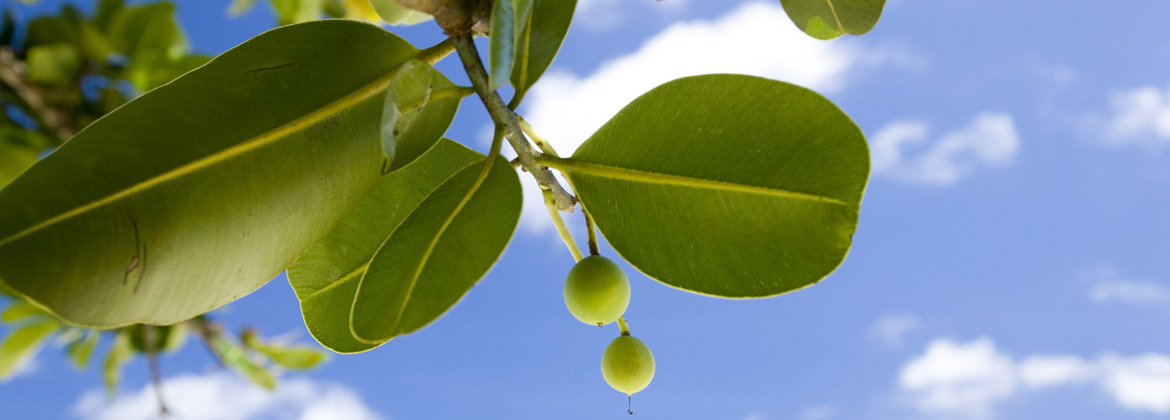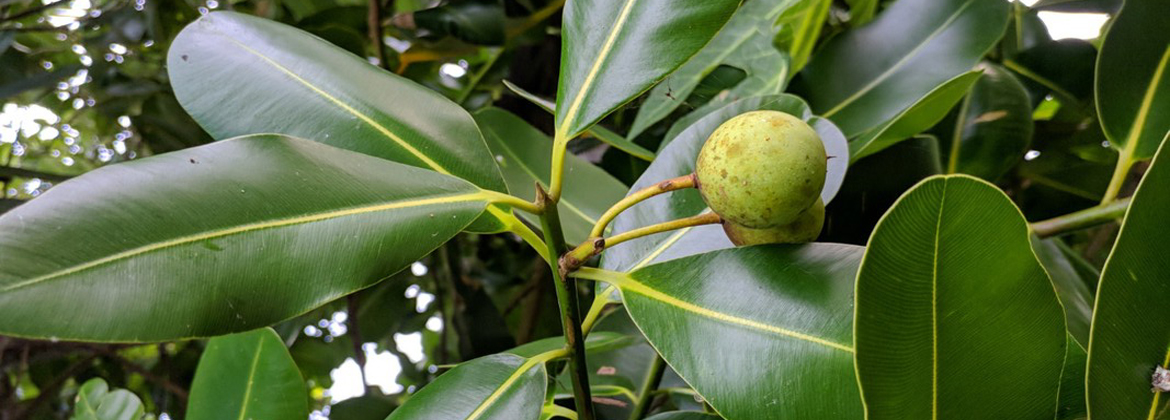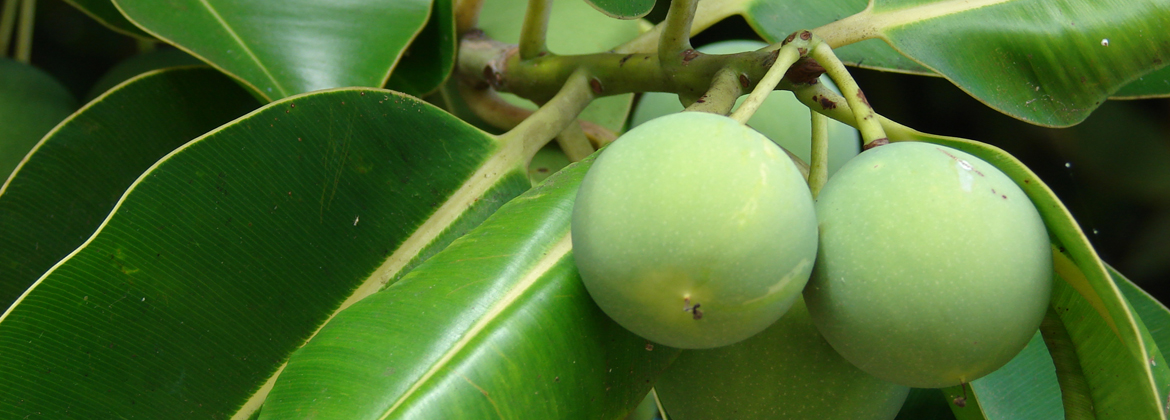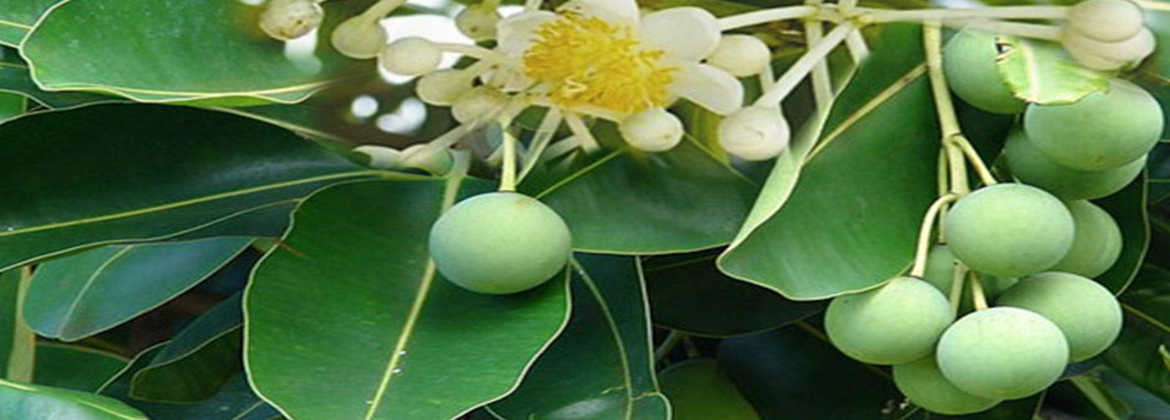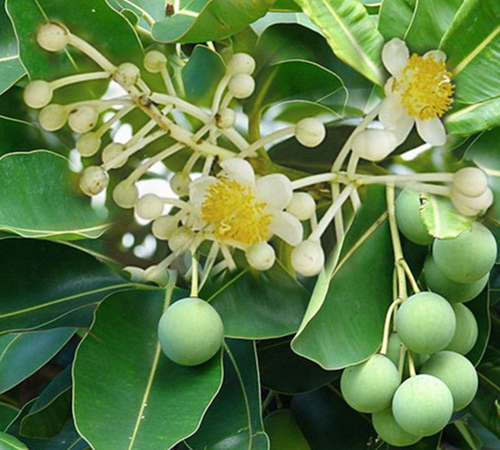Story of Tamanu
Tamanu Oil, also referred to as Green Gold, "ati-tree" is pressed from the fruit kernel of the Callophyllum inophyllum botanical, better known as the Tamanu Nut Tree. The plant receives its name from the Latin term meaning “beautiful leaf,” hence another popular nickname for the century-old remedy: Beauty Leaf Oil. The tree is indigenous to Vietnam & Southeast Asia and blooms twice a year. The tamanu tree produces sweet-tasting fruit which contains a large nut. Once the kernel is dried in the sun for about a month, it becomes sticky with thick, dark oil. The oil that is pressed from the kernel is tamanu oil.
Tamanu Flower
Tamanu oil has a long tradition of use in Vietnam, Southeast Asia and Pacific Islands where it is applied to the skin and hair, for conditions such as acne, psoriasis, and scars. It is said to reduce inflammation and destroy bacteria.
Tamanu oil is used to alleviate pain, applied topically to relieve the pain caused by conditions like sciatica, cold sores, and shingles. Also believed to aid in the regeneration of skin, this oil is used to reduce the appearance of stretch marks, acne scars, and keloid scars. Tamanu oil is said to promote the healing of burns, blisters, cuts, and scrapes. Some people also use tamanu oil to soothe insect bites.
Tamanu Fruit
In the traditional medicinal practices of the Vietnam & Southeast Asia, Tamanu Oil has been used for centuries to soothe and effectively eliminate various skin conditions, even infectious ones. It was applied topically to soothe scrapes, cuts, burns and sunburns, blisters, scars, stings and bites, dry skin, psoriasis, acne, eczema, and sores. It has also traditionally been used to address body and foot odors as well as nerve irritation. The women of Vietnam & Southeast Asia began using Tamanu Oil to promote skin health and clarity, even applying it in baby skin care to prevent potential diaper rash and skin conditions in infants.
Sun dry Tamanu nut
Due to the research of French scientists, who had revealed their findings about the healing and regenerative properties of Tamanu Oil’s topical applications, the French people had discovered in the early 1900s that it exhibited beneficial qualities for addressing pain and for soothing ailments such as leprosy. In other areas of Europe, Tamanu Oil was used to address not only cuts, wounds, boils, and rashes, but to also soothe chapped and cracked skin, topical allergies, bedsores, infections of the nails, and Athlete’s Foot. Cosmetically, it was also used to diminish the appearance of dark and puffy under-eye circles.









